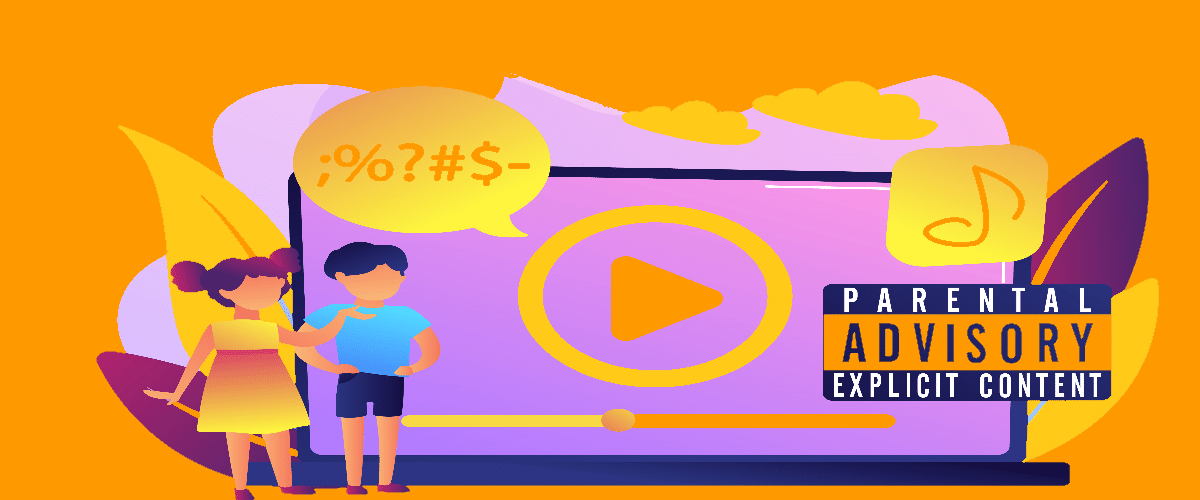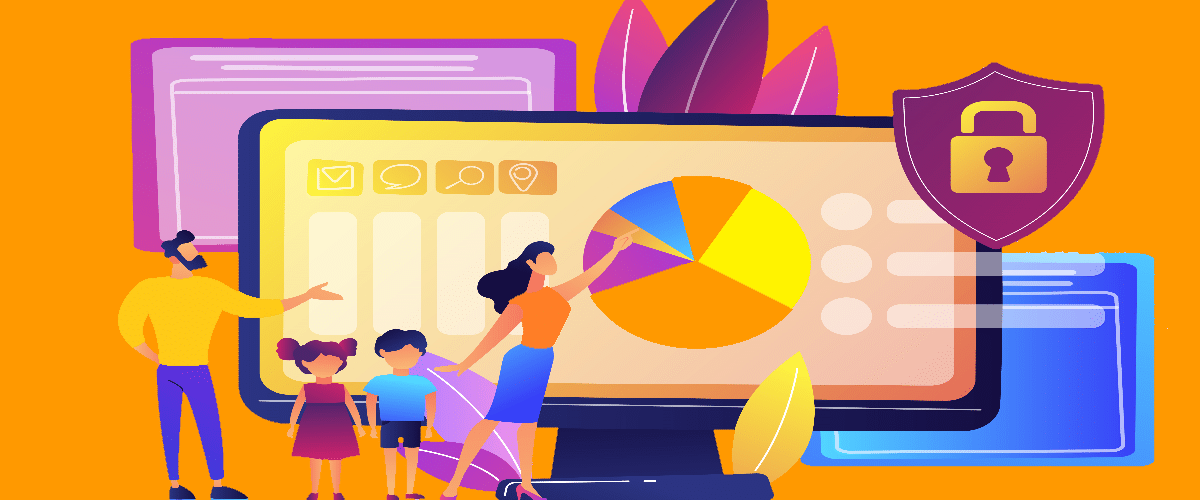
Internet content filtering: protecting your children online
The pandemic has resulted in a shift to online learning services, and this is here to stay. While the move was sudden and schools and households were unprepared to deal with it, hackers were ready to exploit it as best they could. In this article, we discuss the dangers for children associated with the Internet and we show how the FlashStart web content filter can help you grant a safe Internet experience for your Internet users, both the inexperienced and experienced ones.
1. Children and screen time: an overview
1.1 Before the pandemic
In February 2020, when the first news about Covid 19 was spreading, the American Academy of Child and Adolescent Psychiatry published an article titled “Screen Time and Children”. The article reported that, back then, American children aged 8-12 were already spending an average of four to six hours per day in front of a screen, be it on a laptop, smartphone, gaming console or TV. Teenagers reported a higher number, an average of 9 hours of screen time per day.
On top of these stats, the article also called the attention of parents and schools to a much wider issue, hence the type of content children might come across online, contents that are usually unsuitable for children and teenagers and that include, but are not limited to:
» Violence, challenges, weapons and connected behaviors
» Porn and sexual contents
» Negative stereotypes and cyberbullying
» Drugs and substance use
» Targeted advertising for children
» Fraud websites with misleading or inaccurate information
The article then went on to describe the psychological dangers associated with too much exposure to these threats, as well as to a prolonged screen time. They include mood, weight and sleep problems, but are also connected with lower grades in school, body image issues and FOMO, that is, the fear of missing out, which will keep your children even more connected and exposed to unsuitable contents.
1.2 Effect of the pandemic
At the end of April 2020, so just two months after the publishing of the article by the American Academy of Child and Adolescent Psychiatry, Unicef issued a warning on the online risks for children associated with the pandemic’s breakout. The article, which came out of Unicef’s experience in Bhutan, said that “Millions of children around the world including children in Bhutan are at increased risk of harm as their lives move increasingly online due to the COVID-19 pandemic”.
Other warnings and articles appeared about the issues connected with longer online presence for children. Indeed, the pandemic resulted in classes moving online, and so in a whole new range of Internet users, often young and unaware of the cyber risks they might face online.
While schools were unprepared to move online all of a sudden, hackers were ready to play their part well. USA Today reported that online video conferencing services were targeted by hackers, who for example showed videos of child abuse during online meetings for schoolboards. Also, according to the article, between August and September 2020, more than half of the ransomware attacks in the US targeted schools up to the 12th grade.
The discussion up to now points in one, and only one direction: since online learning is here to stay, even if to a lesser degree than that of the pandemic’s height, parents and schools need to take action to protect the online experience of their children and pupils and grant their safety from cyber threats.
>> FlashStart protects your children from a wide range of threats and prevents access to malicious websites ? Request a quotation or try it now
2. Web content filter: the solution for a secure Internet experience
The problem with undesired contents is a widespread one, which has prompted several websites and applications to develop their own way of blocking what is generally known as “explicit contents”.
Also, some operating systems are now offering options for a safer Internet navigation and one among these is the Ubuntu Internet filter.
2.1 Ubuntu Internet filter
The Ubuntu Internet filter is part of the services offered by Ubuntu, the Linux-based operating system that was born in 2004. The name Ubuntu comes from a south African language that means “humanity towards others” and the idea behind it is to give relevance to the users’ community by making them participate in the development of the operating system and the other services offered.
Within the package, what is known as the Ubuntu Internet filter actually takes the name of Web Content Control. Activating the Web Content Control in Ubuntu’s settings means you’ll be blocking access to unwanted or unsuitable contents, such as adult websites, violence, online gaming and other disturbing websites.
The Ubuntu Internet filter is a valid parental control tool for all Linux users. We do however believe that it would be best to combine it with a different tool in order to grant the level of safety you wish for children and pupils. The Internet now pullulates with offers of web filtering services, but we recommendFlashStart since cyber security has always been its target.
>> FlashStart is completely cloud-based and can be activated quickly on your devices with no need to buy any additional hardware ? Request a quotation or try it now
3. The FlashStart web content filter
FlashStart is a European company that has more than twenty years of experience in the cyber security business. FlashStart was one of the first European players to move from traditional, hardware-based, cyber security into the market for web-based cyber security services.
FlashStart product is the choice of customers all around the world since it is:
» Continuously updated;
» Flexible;
» Fully personalizable;
» Fast.
3.1 FlashStart: your Internet protection, always up to date
FlashStart is always updated so as to identify and block the latest cyber threats. The FlashStart web content filter exploits artificial intelligence algorithms to continuously scan the Internet for new threats. Also, it uses AI for learning purposes, to understand the “behavior” and changes in the threats that already exist and identify the new ones coming up.
Being cloud-based, all the new updates are directly implemented in the cloud and, from there, on your devices, which will hence be granted up-to-date protection from all the identified threats. In this way, users won’t need to download anything and neither will they have to proceed with lengthy reboots of their devices: they will enjoy the updated FlashStart protection automatically, with no need for action on their side.
3.2 FlashStart: the flexible protection for all your devices
FlashStart is a flexible tool that can be activated:
» At the router level: you can activate the FlashStart web content filter directly at the router level in order to grant safety of navigation to all the devices connected to the network. This will give you the tranquility to know that all the Internet traffic going in and out of your router gets checked by the filter.
» At the end-point level: you can choose to activate the FlashStart DNS filter at the end-point level through the ClientShield app. This allows you to grant Internet safety also to devices that connect to the web outside your household or educational institution and to mobile phones.
3.3 FlashStart: the Internet protection you can tailor to your needs
FlashStart can be fully tailored to your needs thanks to its granular protection, which allows you to block access to a complete domain or to specific pages of it. Also, you can integrate FlashStart with the Microsoft Active Directory and apply different permissions based on different user groups. For example, within a school you may wish to prevent students from accessing some website categories, like online shopping websites, while you may see no need to block them for teachers, staff and the management.
Also, you can decide to schedule the blocks. Indeed, FlashStart allows you to set times and dates for the blocks and, for example, prevent students from accessing social networks during school hours and allowing it during breaks.
3.4 FlashStart grants almost zero latency
FlashStart is fast, extremely fast. The system exploits a network of anycast data centers that are spread all around the world and can thus grant an ultra-rapid response, both for router-based and end-point protection, at any time and for requests coming from everywhere.
This means that latency during navigation is close to zero and most users don’t even notice that there are checks going on while they carry out their online searches or chat and play with their online friends. As a consequence, they will not want to deactivate the protection since it is not slowing them down.
Nevertheless, should they try to do so, you can rest assured that FlashStart provides only the network administrator with the key needed to lift Internet protection and so children and students will not be able to bypass it independently.
>> Everyday, FlashStart blocks over 80 million undesired websites. Request a quotation or try it now
You can activate the FlashStart® Cloud protection on any sort of Router and Firewall to secure desktop and mobile devices and IoT devices on local networks.










